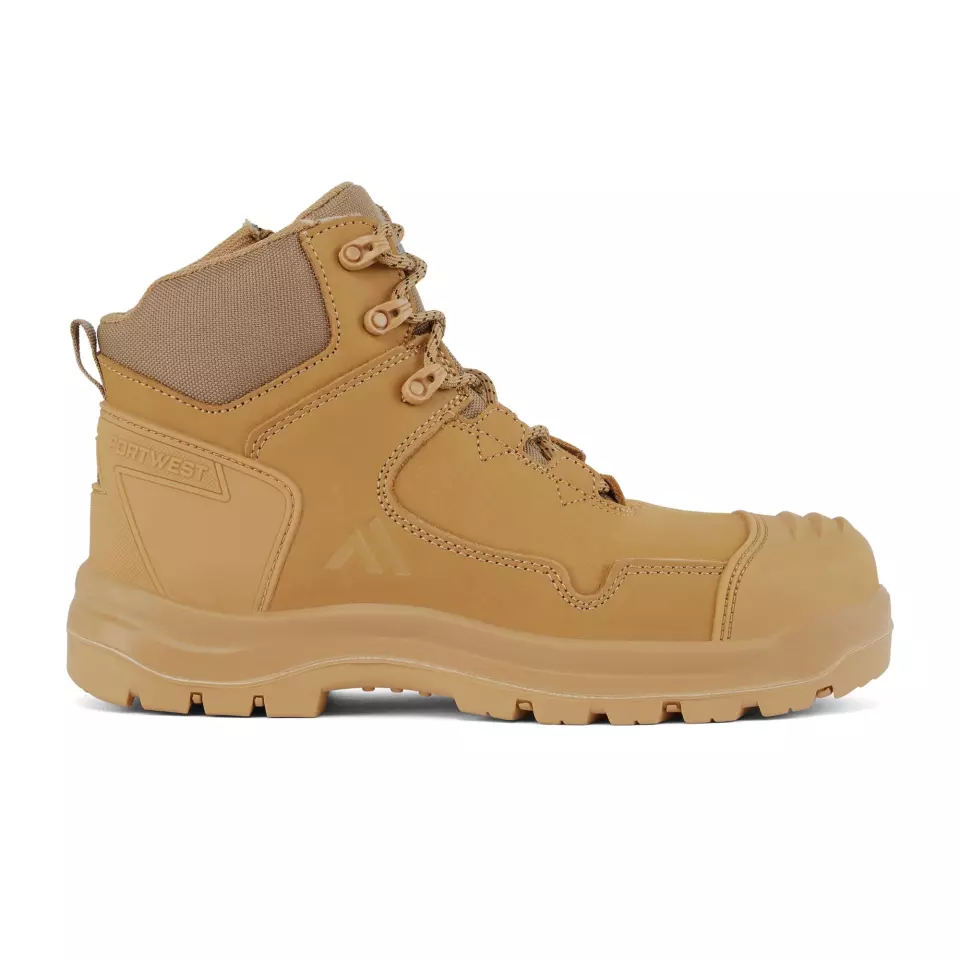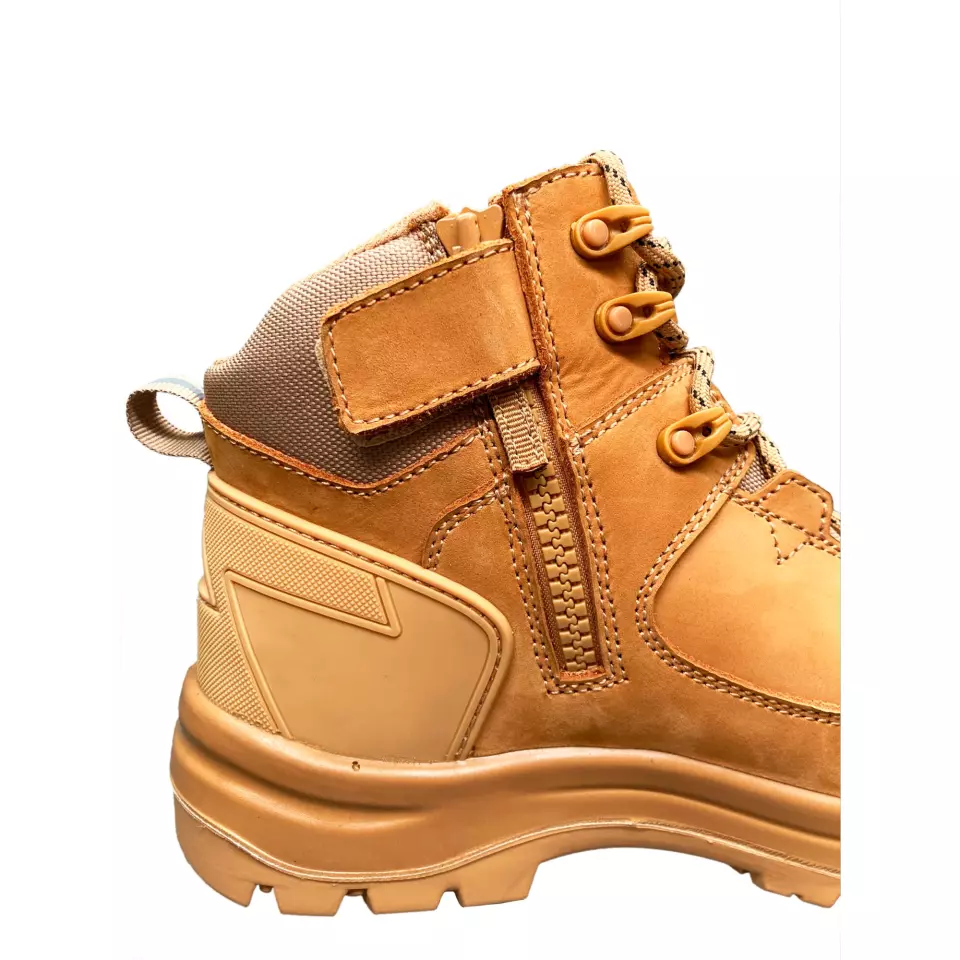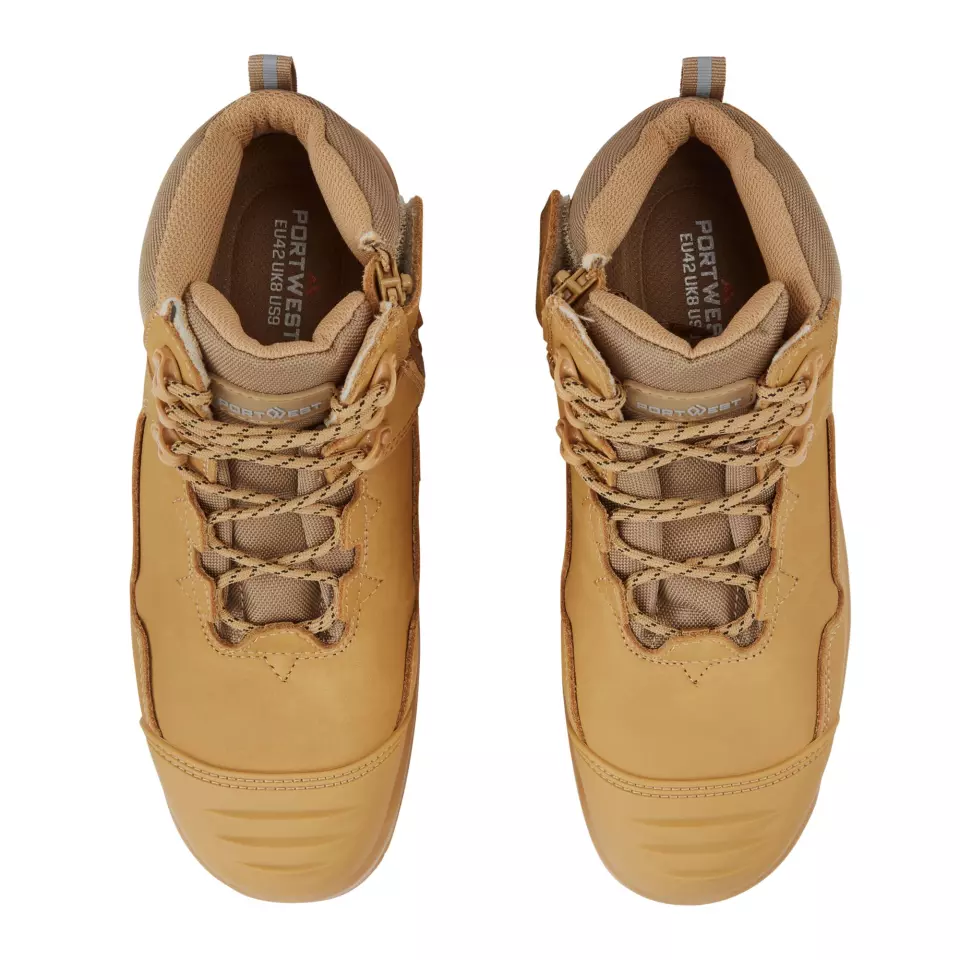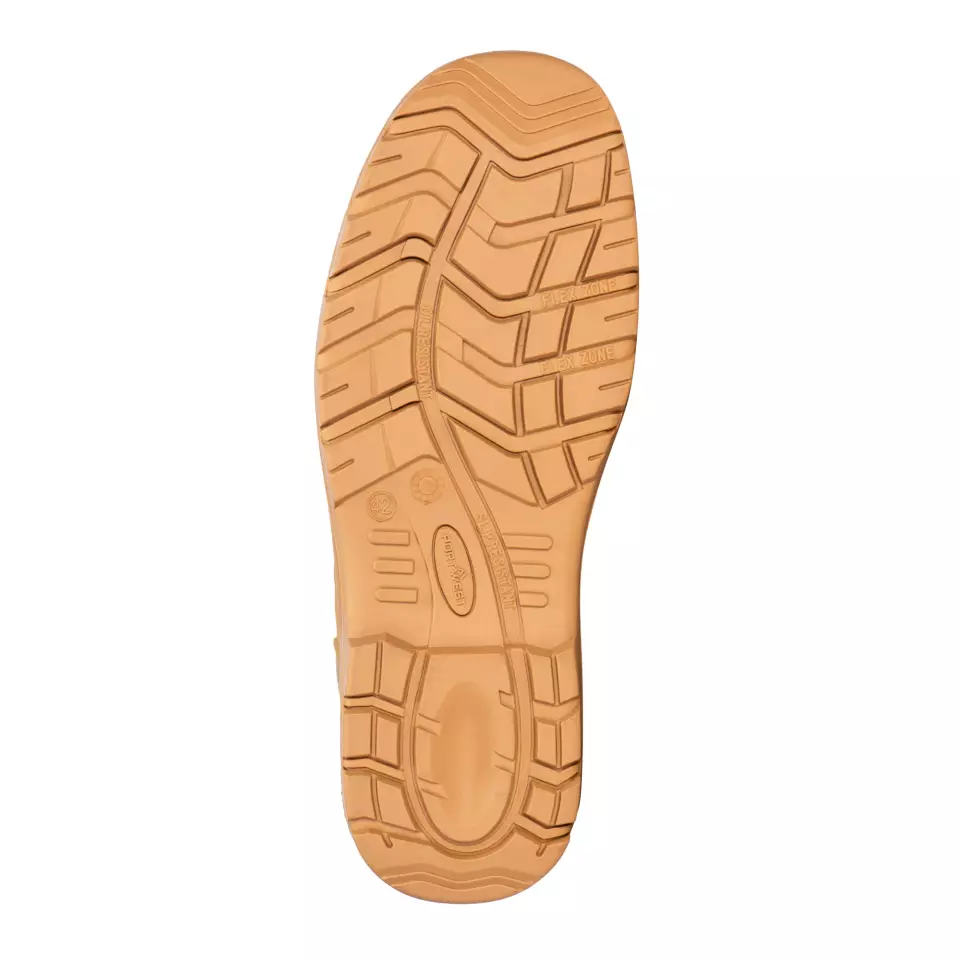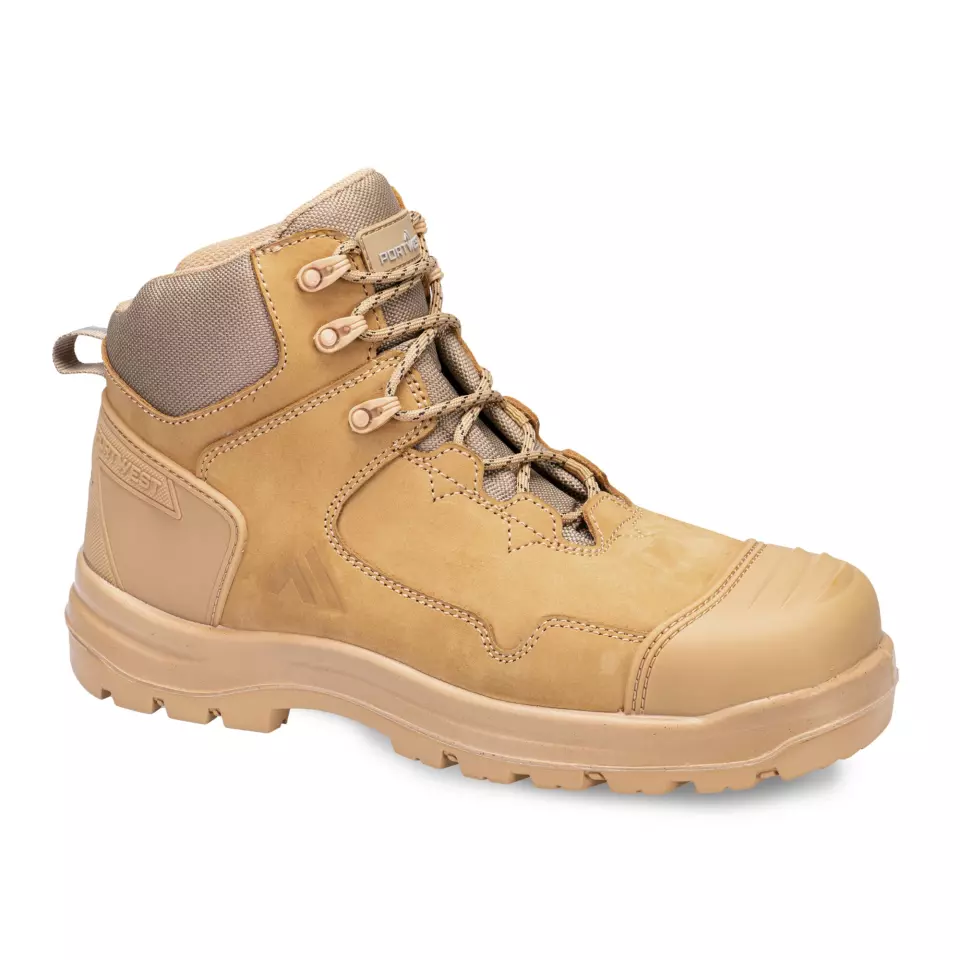Portwest Composite Nubuck Leather Mid Boot S3S HRO SR FO SC LG, Wheat
4.9 / 5
Portwest
visit storeProduct description
This mid-height safety boot combines nubuck and full grain leather construction with composite protection elements for comprehensive workplace safety. Featuring a heat-resistant outsole rated to 300°C and engineered tread pattern, it delivers excellent slip resistance on uneven terrain while resisting fuel oil and water penetration. The boot incorporates dual-density sole technology with anti-static properties and includes convenience features like a quick-release zip and cushioned footbed for all-day comfort.
Product Features:
- Nubuck leather upper with full grain leather construction
- Quick release zip and robust internal-leg zip for easy access
- Cushioned comfort footbed to reduce foot fatigue
- Reflective trim for increased visibility and safety
- Back pull-tab and padded collar for enhanced comfort
Technical Details:
- Composite toe cap and pierce-resistant composite midsole
- Heat resistant outsole rated to 300°C
- Dual density sole unit with ladder grip
- Fuel and oil resistant, slip-resistant outsole
- Anti-static footwear with wide fitting
Standards:
- CE certified
- EN ISO 20345:2022 S3S
- AS 2210.3:2019 S3
- High Visibility
- Heat & Flame Resistance
- Impact Resistance
- Electrical Protection
- Water Resistance
- Slip Resistant
Request a free sample
Test first and buy later. Visit any product page to request your free sample.
Standards and labels
Portwest delivery terms
Free delivery when you order more than 300,00 € from Portwest
Supplier shipping fee 5,00 €
Brand minimum 20,00 €
66,98 €
Shipping fee is 5,00 € for orders under 300,00 €
Sold in units of one pair
Need larger quantities?
Other products you may like
Recently viewed
Other products you may like
Similar products you may like
Autonomous sourcing platform
The most efficient way to source and order supplies for your operations
